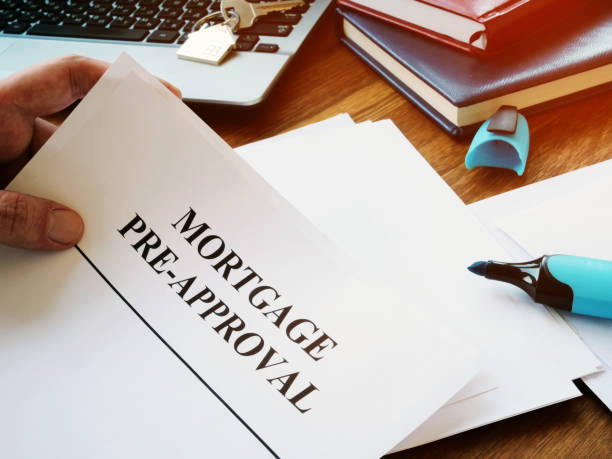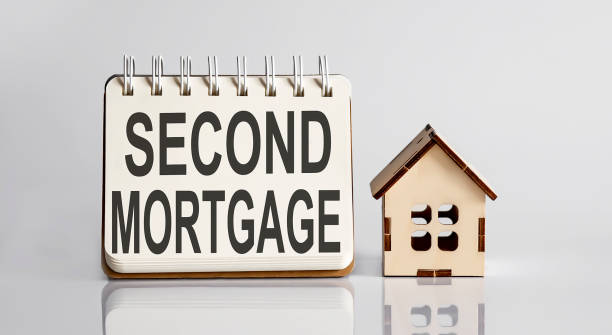Mortgage pre-approval is the process of getting preliminary approval for a home loan before actually applying for the mortgage. Obtaining pre-approval involves providing basic financial information to a lender, who then issues a pre-approval letter stating how much the buyer is qualified to borrow.
One key difference between traditional pre-approval and soft pre-approval is the type of credit check performed. With a standard pre-approval, the lender performs a hard credit inquiry which involves pulling the applicant’s full credit report. This shows up on the credit report and can negatively impact credit scores.
In contrast, soft pre-approval uses a soft or soft-pull credit check. This type of check does not involve accessing the full credit report. Instead, lenders use alternative data sources like credit monitoring services to get a preliminary sense of credit history without doing a hard pull.
How Does Soft Pre-Approval Work?
The soft pre-approval process is generally quicker and more straightforward than a standard pre-approval:
Providing Basic Financial Information
Applicants provide basic identifying and financial information like name, income sources, debts, and current housing expenses. Lenders may ask for documentation like recent pay stubs or bank statements.
Soft Credit Check
Rather than pulling the full credit report, lenders use alternate data sources to get a general picture of creditworthiness. They look at factors like on-time bill payment history, balances on open accounts, and public records.
Estimating Borrowing Capacity
Using the soft credit check results and financial documentation, lenders estimate how much the applicant could qualify for based on general debt-to-income ratios and underwriting guidelines.
Issuing Pre-Approval Letter
If preliminarily approved, the lender provides a soft pre-approval letter stating an estimated borrowing amount. This letter is not a full guarantee but gives home buyers a starting point for house hunting.
Benefits of Soft Pre-Approval
Some key advantages soft pre-approval offers over a traditional hard credit check pre-approval include:
No Hit to Credit Scores
Since soft checks don’t involve pulling the full credit report, there is no impact on credit scores. Multiple hard inquiries in a short period can lower scores.
Quicker Process
Soft checks are typically faster since lenders don’t have to request and review a detailed credit report. This speeds up the pre-approval timeline.
Explore Options First
Home buyers can get pre-approved without affecting their credit, allowing them to browse homes and get a wider search started before committing to a hard credit check.
Multiple Lender Checks Okay
Applicants can get soft pre-approvals from several lenders at once to easily compare rates and programs without the risk of multiple hard pulls on reports.
Limitations of Soft Pre-Approval
While soft pre-approval offers advantages, it’s important to understand some key limitations compared to a standard pre-approval:
Estimated Only
Since lenders don’t fully review credit, the pre-approval amount is just an estimate. The hard credit check at application could yield a different result.
Non-Binding
Soft approval letters are provisional with no guarantee of an actual loan. Final underwriting during a purchase requires full documentation review.
Less Information Available
Soft checks provide limited credit details, so lenders have less data to base the approval decision on compared to pulling the full report.
Multiple Lenders Still Risky
While there is no credit score impact, applying to too many lenders too quickly could be seen as “loan shopping,” which hurts mortgage rates.
So, in summary, soft pre-approval is best suited for getting general financing details to start a home search versus replacing a definitive pre-approval closer to making an offer.
How Do Rates Compare?
Another consideration with soft versus standard pre-approvals is potential differences in the interest rates quoted. Keep in mind:
Soft Rates May Be Higher
Without a full credit review, lenders view soft pre-approvals as slightly riskier. They may quote somewhat higher rates to account for potential issues found in the formal report.
Shop Multiple Lenders
Shopping around is still important, as some competitive lenders may offer comparable rates regardless of approval type if basic credit looks strong. Don’t assume soft approvals mean higher costs.
Lock Rates at Hard Approval
Once formally approved after the full credit/underwriting process, borrowers can lock in definite interest rates. This assures getting the best possible pricing and rate.
So, in summary – soft approval rates may be slightly elevated, but shopping ensures the best options. Borrowers secure their actual loan rate only after formal full-doc approval and locking.
Timing Considerations
The timeline for the pre-approval process can vary depending on the type of check performed:
Soft Pre-Approval
Usually, it only takes a few business days, as lenders don’t have to request credit reports. Documents only need review, not full underwriting.
Standard Pre-Approval
It can take 1-2 weeks on average. Includes time to request credit reports from bureaus, thoroughly review credit and financial details, and issue approval findings.
Application to Closing
After pre-approval, an average home purchase takes 45-60 days from offer acceptance to closing if no issues arise. This allows time for inspections, appraisal, final underwriting, etc.
So, in summary – soft pre-approval provides a fast timeline, but full pre-approval is needed well ahead of making an offer to allow sufficient processing time.
Choosing a Lender for Soft Pre-Approval
With an understanding of how soft pre-approvals work, the next step is choosing a reputable lender. These tips can help identify good options:
Ask for Referrals
Reach out to trusted real estate agents and homeowners you know, or check online reviews to find lenders others have had positive experiences with. Referrals provide valuable insight.
Compare Multiple Lenders
Obtain soft pre-approval quotes from at least 3-5 direct lenders and mortgage brokers to compare estimated rates, programs, and fees. This identifies the most competitive options.
Verify Licenses and Standing
Check that lenders are properly licensed through the Nationwide Mortgage Licensing System (NMLS) and have clean complaint histories by searching the Consumer Financial Protection Bureau (CFPB) database.
Assess Communication and Support
Excellent customer service is key, so research online feedback about prompt responses by phone and email. Look for lenders with positive records of guide clients through the process.
Consider Loan Programs
Review each lender’s products, including standard conforming loans, FHA, VA, and USDA insured options. Make sure they offer flexibility for various buyer situations.
Beware of Promises
Steer clear of any lender vowing a “definitive approval” without a credit check or not disclosing all applicable fees. Reputable businesses aim to set realistic expectations from the start.
Choosing a reliable and communicative lender is crucial for gaining an accurate soft pre-approval and smooth overall home financing experience. Taking the time for research pays off.
Presenting Your Soft Pre-Approval to Sellers
Armed with a soft pre-approval letter, buyers can start shopping for homes more confidently. When making offers, here are tips for presenting this preliminary financial qualification:
Explain It’s an Estimate
Be upfront that the approval letter shows estimated rather than guaranteed borrowing capacity since it’s not a full underwriting. Don’t overpromise; financing is 100% secure.
Emphasize Motivation to Buy
While soft, the letter demonstrates serious interest and ability to obtain a mortgage. Assure sellers you’re prequalified and highly likely to follow through with loan applications.
Offer to Provide Proof
Be prepared to share documentation like recent paystubs, bank statements, or soft credit report results. This provides proof of income, assets, and generally good credit standing.
Clarify Timeline for Hard Approval
Disclose your planned timeline for proceeding with a standard pre-approval and indicate when a lender will be able to lock in firm financing terms.
Highlight Other Qualifications
In addition to the soft approval letter, emphasize factors like strong down payment funds, clean homebuying history, and stability as a financially responsible buyer.
Ask for a Counteroffer if Needed
Request sellers consider a counteroffer if your financing presents a risk. You can then expedite a standard approval to help solidify the deal. But stay respectful of their concerns, too.
By keeping sellers informed of your financing status and readiness for traditional pre-approval, soft approvals become a credible starting point in competitive real estate markets. Present it confidently and overcome doubts.
FAQs About Soft Pre-Approvals
1. What if my credit report shows poor marks – will I still qualify?
While soft checks provide limited credit details, major red flags like recent bankruptcies, foreclosures, or very high debt could still preclude approval. Lenders may deny soft applications, indicating little chance of standard approval. However, it still allows homeowners a chance to improve credit in preparation. Speaking to a loan officer about your full situation and plan to rebuild your credit history can help determine the best options.
2. How long is a soft pre-approval valid for?
Most soft pre-approvals are valid for 30-90 days. After that, credit reports and financials need re-evaluation since details could change. When making an offer, have the lender provide a timeline of how long it will take to move forward with standard underwriting, given current turnaround times.
3. What’s the maximum soft pre-approval amount typically?
There is no set cap on soft pre-approval amounts, but lenders will generally estimate a figure up to 4-5 times gross annual income or a mortgage around 28-33% of monthly income. Any higher depends on overall financial profile strength assessed through soft checks and documentation provided.
4. Can I still shop rates after getting soft approval?
Absolutely. Soft pre-approvals are preliminary and non-binding. Homebuyers should still obtain quotes from multiple lending sources to compare programs, documentation requirements, fees and especially interest rates. Signing a formal loan application locks in the terms.
5. What if my financial details change before closing?
Changes to income, assets, debts, or credit report details between pre-approval and closing require re-evaluation. Lenders may need updated documentation or even a new full application if changes impact qualification/rates. Keep lenders fully informed of any changes during the financing process.



